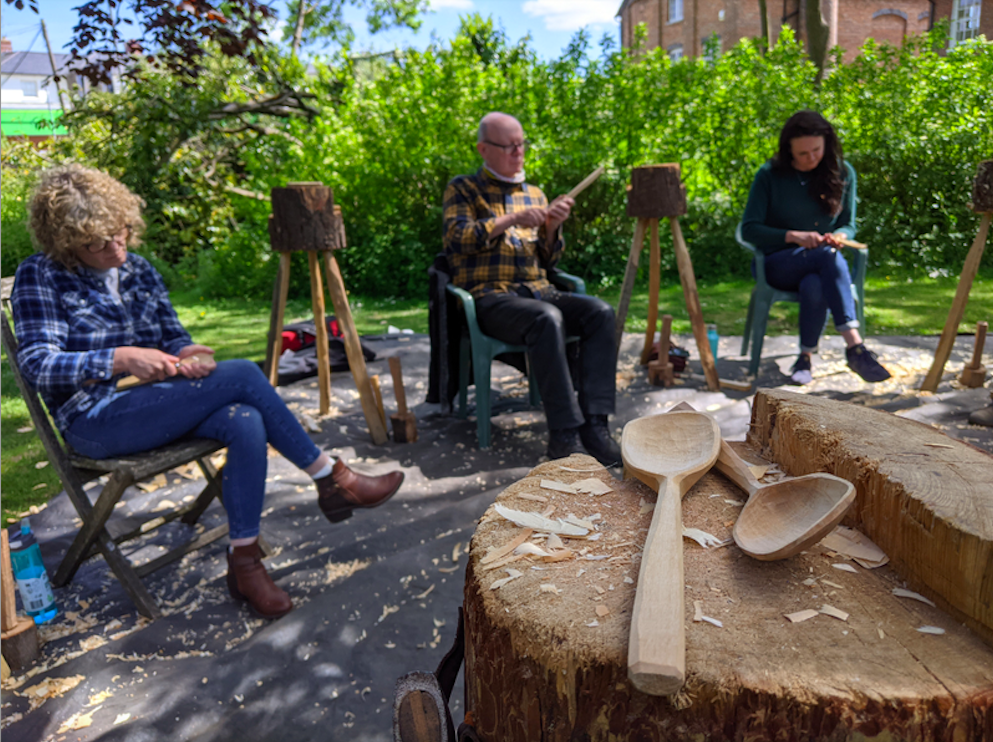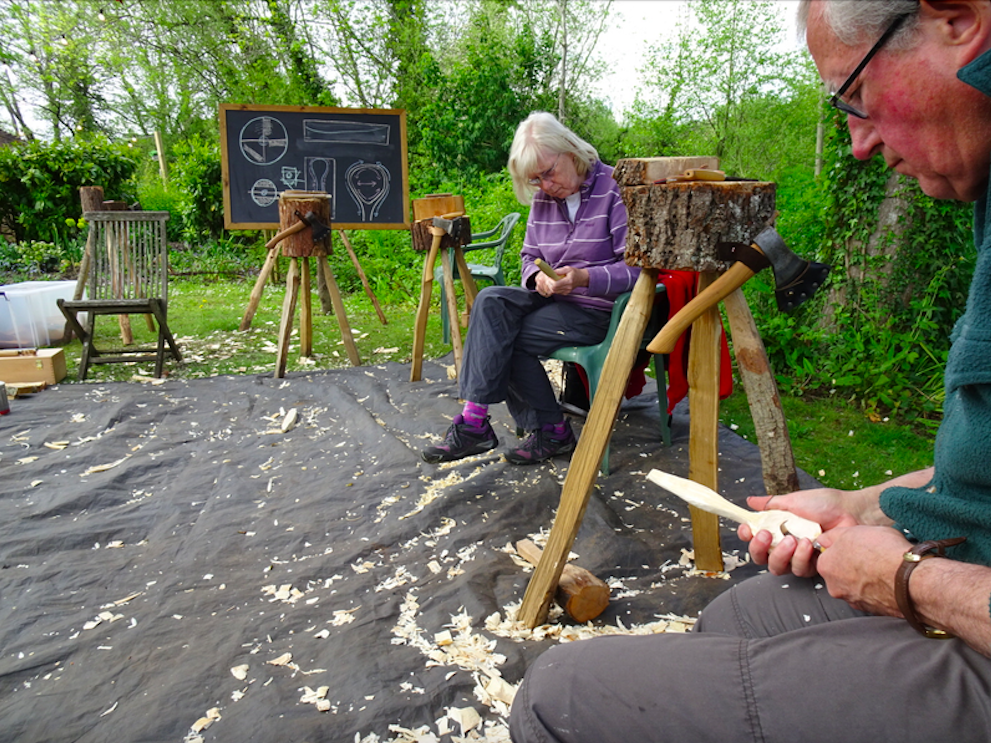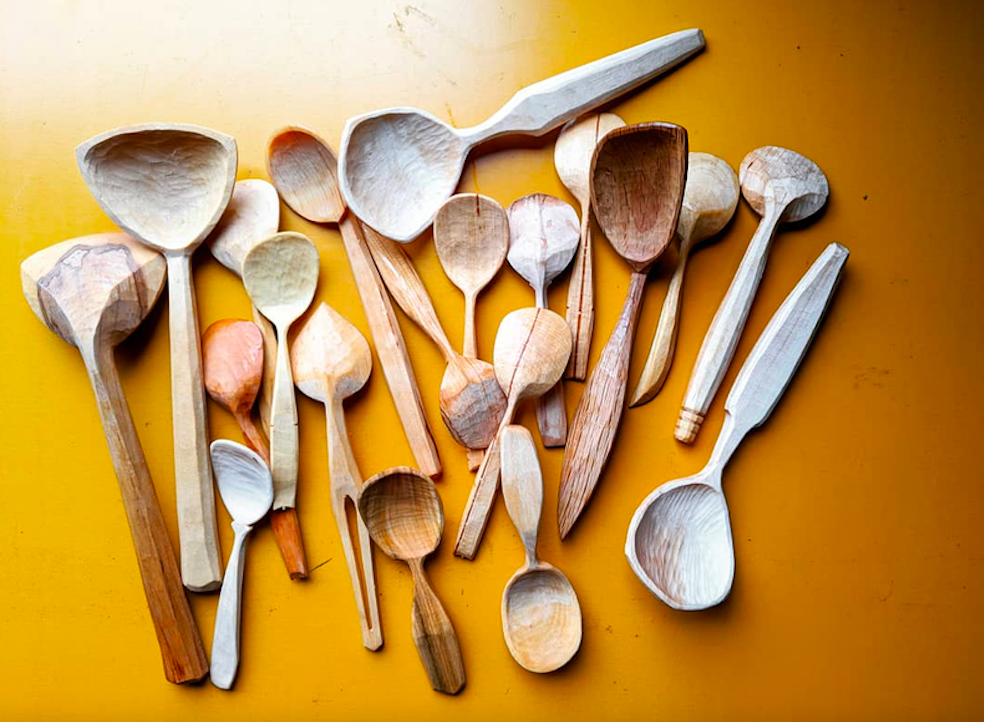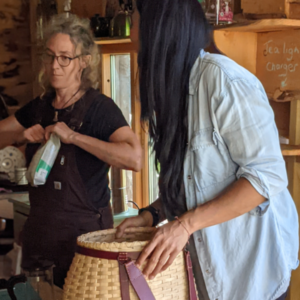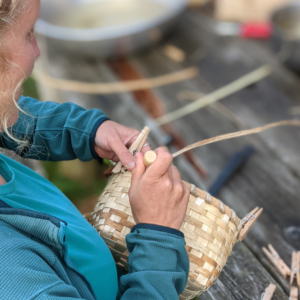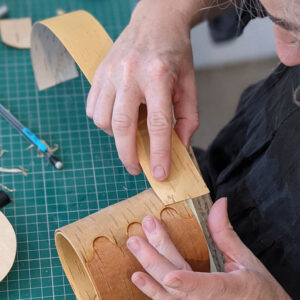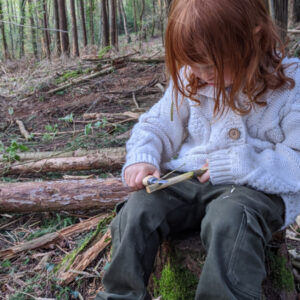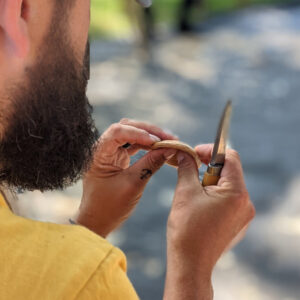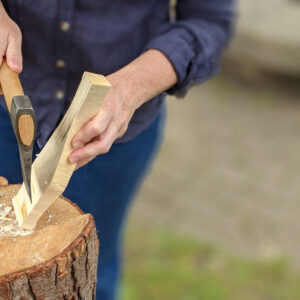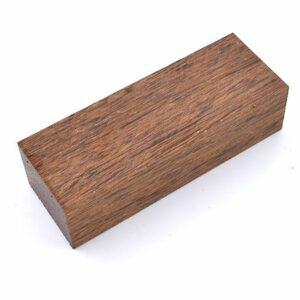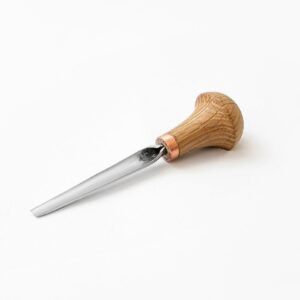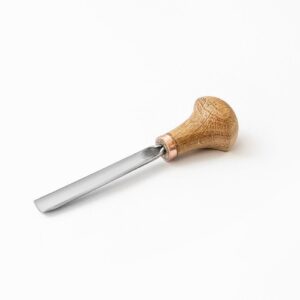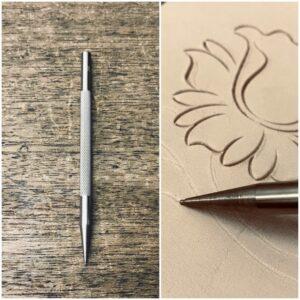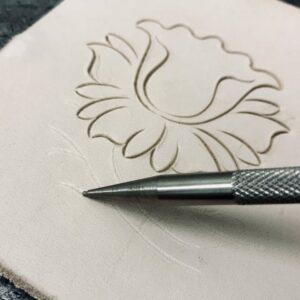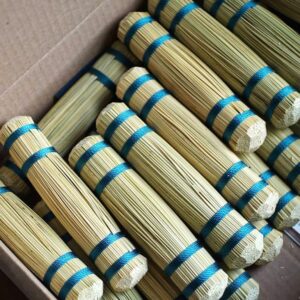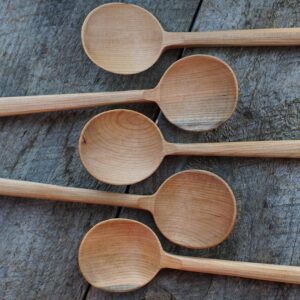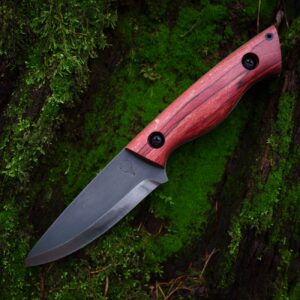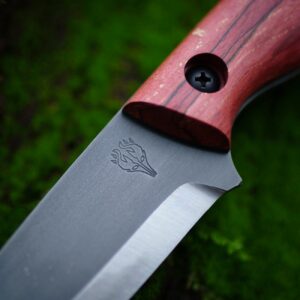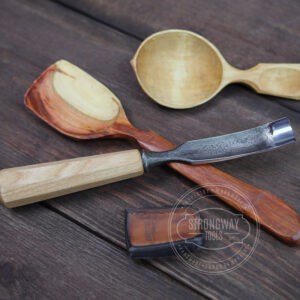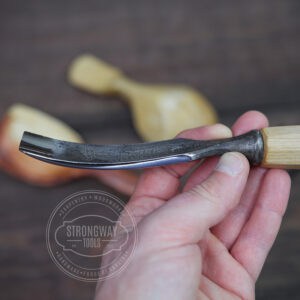Top tips to help you on your spoon carving journey.
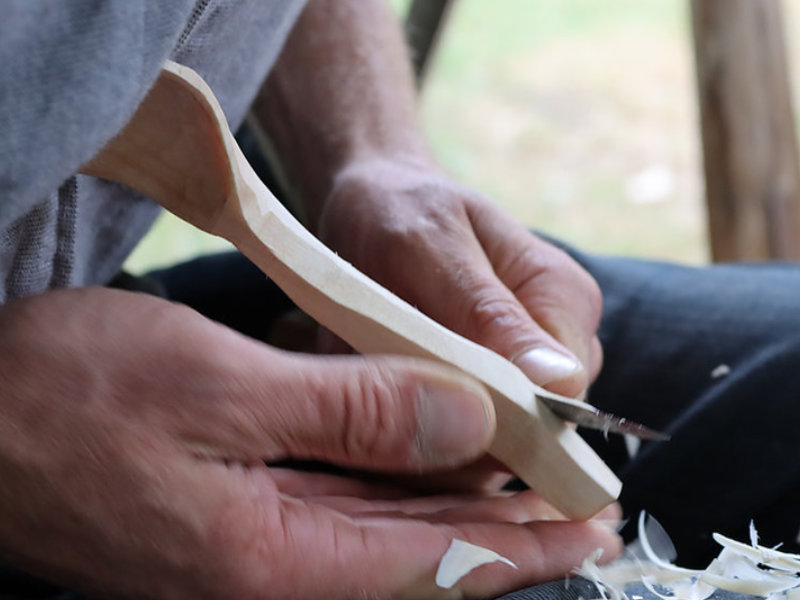
A blog? Well, sort of. I thought I’d start by doing a little Q&A on the most commonly asked questions about spoon carving. I will hopefully answer most of the beginner spoon carving questions people ask, plus provide some useful tips on various aspects of spoon carving and green woodworking in general.
I’ve broken the questions down into different categories, I hope you find the information below helpful!
Wood
Which woods are good for spoon carving?
Its probably best to say which aren’t. I would avoid Oak, Sweet Chestnut, Yew & most of the coniferous soft woods. All are either very hard or far too soft.
Birch, Sorbus, Alder, Willow & Lime are good ones to start with. All are in the ‘relatively soft’ category, and good for beginner hands. Moving up the hardness scale we have Ash, Sycamore, Hazel, Walnut, Holly & the fruit woods. Sycamore is particularly lovely.
How and where the tree has grown will affect how it carves. If it’s grown very fast, in good conditions it will be softer. Slower growth means tighter grain and harder (but stronger) wood. The straighter and less ‘branchy’ the tree, the cleaner the grain and easier the carving!
What does ‘green’ wood mean?
Green wood simply means freshly cut wood, from a living tree/branch. It still has its inherent moisture and is much easier to carve than dry, or dead wood.
Can you carve wood once it has dried out?
Yes, though the more the wood has dried the harder it is and the tougher on the hands the job becomes.
How long does it take wood to dry out too much for spoon carving?
This depends on many factors; species, the season, if it’s still ‘in the round’ or already split, where its located. Essentially the smaller the piece of wood, the quicker it will dry out.
Leave your carving wood ‘in the round’ (don’t split it), in a shady spot and it will last longer. Alternatively split the wood into spoon sections and store in Tupperware, under water or in the freezer to prolong its freshness!
Where do you get all your carving wood from?
I am lucky enough to work as a tree surgeon and know many people in the tree world, so I have a fairly reliable source of green wood. If you cant get hold of fresh wood ask a local tree surgeon, or keep an eye out for any recent tree works in your local area! Failing that ask me, I might be able to help!
Tools
Which tools should I buy for spoon carving?
All you need to carve a spoon is a carving axe, straight knife or ‘sloyd’ knife, and a ‘crook’ knife or ‘spoon’ knife. The ‘Mora 106’ & ‘Mora 164’ are the best knives for starting out, and are an absolute bargain. The Robin Wood Carving Axe is the best axe you can buy for the money.
If budget isn’t an option, there are many fantastic independent makers around the world creating some wonderful tools.
Can I just use my opinel or Swiss army knife?
Aha! Well, the answer here is certainly you can. However there are a few things to consider. The ‘grind’ on a knife blade is pretty much the single most important factor to think about when considering that knife for wood carving. The ‘grind’ is the angle of the cutting edge. All knives are a piece of metal with a bevel angle tapering towards the fine ‘edge’ which does the cutting. For efficient wood carving the angle of those bevels is quite specific, usually between 25 and 27 degrees. An Opinel or Swiss Army knife has a tiny ‘micro bevel’ on the very end of the edge (like a kitchen knife). It will cut and carve wood, but nowhere near as well as a knife designed for wood carving.
Do I need a ‘finishing’ knife?
No, you don’t. A ‘finishing’ knife is usually a second knife carvers have which they use exclusively for fine, delicate finishing cuts once the spoon has dried out. They do help to make finshing cuts easier. Usually they are of a thinner steel, and if they are used only for finishing cuts its easier to keep them sharp. However they are by no means necessary, a Mora 106 will do everything you ever need. Just keep it sharp!
My tools have gone rusty, help!
Fine wet and dry sandpaper (metal work stuff). Sand and oil the blade. If you don’t use your tools regularly, its worth oiling the blades before they’re put away for any length of time.
Safety
Should I wear anti-cut gloves?
I don’t believe anti cut gloves are a good idea. In my experience teaching students over the years, all those who’ve done some carving before and use anti-cut gloves have learnt very bad techniques. This is because the glove removes the risk of cutting your hand, and therefore you don’t need to worry about using the correct grips or executing them safely.
Don’t wear gloves. Take your time and learn properly!
I keep cutting myself, what am I doing wrong?
SLOW DOWN. Take your time when carving. There should be no movements that haven’t first been thought about. Ensure you learn the correct grips, and use them correctly. As you practice and get better instinct will take over, much like driving a car.
Everyone cuts themselves occasionally. The most important thing is to know why you cut yourself, so you can learn from the mistake.
If in doubt, join a carving workshop or club and get some tuition from an expert!
Carving
How do you finish your spoons?
I finish my spoons using knives. There is always huge debate and discussion in the carving world around knife finishing vs sanding, and often some scoffing at those who sand.
Getting a smooth finish with a knife is difficult. First and foremost it requires the ability to sharpen your knife to an extremely keen edge. Secondly, it requires a good understanding of the wood you’re working and the grain direction. From the minute you start carving the spoon, you’re working the grain so that smooth cuts will be possible later on. It requires a steady hand and lots of patience.
Sanding is not so difficult. It’s laborious for some, and dusty. Without proper care it’s easy to ’round off’ all the edges and contour lines of the spoon, making it feel flat and a bit ‘lifeless’.
Sanding is how I finished my spoons for many years until I felt I was good enough to finish with a knife.
I’ve always felt that knife finishing is a good goal to aim for, because it requires the perfection of ones spoon carving skills.
There is nothing wrong with sanding, and the beauty is even a complete beginner can get their first spoon looking lovely after some sanding. However, knife finished spoons usually look better, require more skill, and last longer due to clean cut fibres.
Which sandpaper should I buy?
Mirka Abranet is great.
Top tip, once you’ve sanded your spoon, don’t take your knives to it again. The abrasive metals left-over in the wood after sanding will blunt your tools. I learnt this fact as a beginner the hard way!
How long does it take to dry out the finished spoon?
Somewhere warm and dry, usually not more than a few days
Which oil should I use on my finished spoons?
Take your pick! Food grade oils such as Flax seed & Hemp seed are commonly used. Tung Oil also. Walnut oil, Mineral Oil. Bees wax mixed with any of the above works a treat.
More important to consider are the properties of the oil you’re using. Does it have drying/curing agents? If so its best avoided as these are usually not very nice. Secondly does it cure naturally? Olive oil and coconut oil don’t and so are best avoided also.
Tuition & Courses
Nothing can substitute real learning from an experienced teacher. (I would say this of course!) Whether you’ve never picked up an axe before, or want to improve your skills & techniques, my regular spoon carving workshops are highly regarded by all who join.
Since I began running them, I wanted to emphasise actual, structured learning, rather than ‘have-a-go’ type sessions, of which there are many all around the country.
I aim to give everyone who joins a workshop with me a method, skill set & awareness of safety which will stay with them as they continue their carving journey.
Click here to see when & where my next course is running. I hope to see you there!
Jack,
Thanks for reading,
JACK FAZEY’S WORKSHOPS
